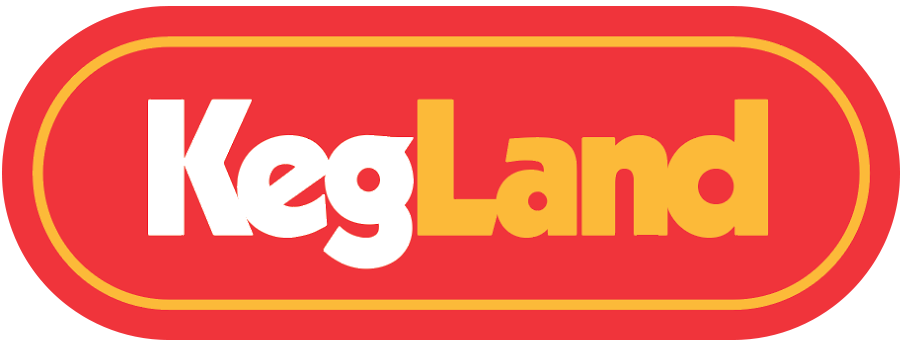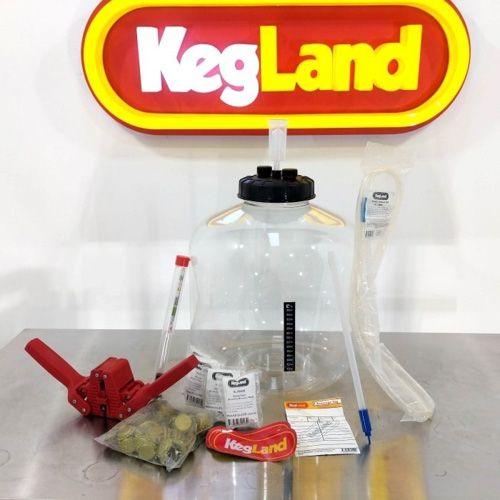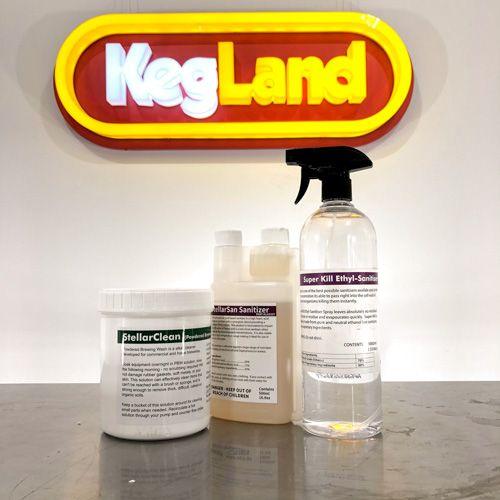Home Brewing: The Basics (Or, How To Get Started) - updated for 2024!
Home brewing beer is a fantastic and rewarding hobby. Pretty much the whole Kegland team are avid home brewers. We love pushing boundaries, brewing classics, talking, theorizing and of course, drinking delicious home brew!
Home brewing has also come a long way from the early days. You may have a perception that home brewing is just a cheap way to get beer.
Well, it is. For sure.
But it’s far more than that. We, the home brew community, have the equipment, the ingredients and most importantly the knowledge to brew beer that rivals or betters any commercially available brew, from a simple, classic pale ale to a fruited sour. From a rich stout to a hazy IPA. The sky is the limit.
So, how to get started? Let’s talk about that.
The Basic Types Of Brewing
Broadly speaking, there are two schools of brewing. It’s pretty common to start out as one, and step up to the other, although many never do, and fantastic beer can be made either way.
The two schools of homebrewing are Extract Brewing, and All Grain Brewing.
Extract Brewing
This is how a great many people get into home brewing. It has a lot of advantages, speed and convenience being two. The fact that you don’t need a ton of dedicated equipment is another.
Basically, beer is derived from malt. The malt is used to create a wort. Yeast is added to the wort to create beer. Side note – learning to homebrew is learning to love yeast – trust me on this.
To create the wort, the easiest way is to use a malt extract of some kind. This basically means that a brewer has taken the malts and extracted the fermentable sugars from them. This is then concentrated into either a liquid or a dry malt extract. These extracts can then be turned into beer by adding water, hops (sometimes) and yeast. Place in a fermenter and in a week or so you will have delicious beer!
Simple, fast and easy.
Malt extract brews can be as simple as an all in one kit where you just add water and yeast. We have a few to choose from here. An alternative is to step it up a notch. You can buy cans of extract and tailor them to your tastes – choose the hops and yeast (we are really big fans of the yeasts that Lallemand are producing) that you want to make the beer you desire.
A lot of people go further and add steeped grains to their extract. This basically involves using a canned or dry extract for the majority of the sugars, but steeping some speciality grains for 30 minutes or so to add flavor and complexity. Again, the choice is yours.
Extract brewing enables you get go from opening the extract to putting your wort in a fermenter ready to go in around an hour – it really is quick and easy.
Another super easy way to do extract brewing but have more control over the process and the flaour of your brew is to use DME (Dry Malt Extract) and steeping grains. DME is a greatt neutral (unhopped) base to build on, and using steeping grains means you can add flavour and colur with no special equipment at all - check our our range of 15 Minute Boil Kits for ideas!
All Grain Brewing
All Grain brewing is often seen as the next step. It certainly allows for a level of control that can’t be achieved with pure extract brewing.
Basically, you create the wort from scratch. This is done by milling malted grains and then mashing them. Mashing sounds complex to the uninitiated, but really it just involves holding the crushed grain in water at a set temperature for a set amount of time (around 65-67c for 60 minutes is pretty typical).
This process enzymatically releases the sugars from the grain, creating a sugar solution called wort.
The wort must then be boiled – this both sanitises it and boils off potential off flavours, such as DMS. The boil will also reduce the volume and concentrate the sugars.
Once boiled, the wort must be chilled (or no chilled in a cube, which we prefer here at Kegland!).
The chilled wort is put in a fermenter (The All Rounder FermZillas are our favourites) and yeast is added. The yeast will go to work and turn the wort into beer, in a process which I’m pretty sure is pure alchemical magic!
There’s a few ways to get into all grain brewing.
Brew In A Bag is very popular, not to mention being a technique invented by us clever Australians.
For BIAB, you need a big pot, known as a brew kettle, and a BIAB mesh bag. The grains are mashed in the bag, which is then lifted and strained, and the boil happens in the same pot. It’s fast and easy, and requires relatively little outlay. You can also use an electric boiler and bag – we have convenient ready to go kits
The traditional method is the three vessel system, which is (at home brew level) a scaled down version of commercial brewing. It’s a great way to brew, but time and consuming, and not something I will cover in depth here.
The third method is commonly known as All In One, or sometimes eBIAB.
This is a clever mash up of three vessel and BIAB.
You have a unit which you can mash and boil in, self contained, self powered.
Our version is the BrewZilla, available in 35L and 65L versions. The main features are that they are self contained breweries. You fill with water, bring to you r mash temp then add your crushed grain to the malt pipe. Mash for an hour, recirculating the wort using the built in pump – an innovative feature of our range. Once the mash is complete, the malt pipe is lifted and boil is started, all in the same unit. Using an all in one unit like the BrewZilla is a marvelous combo that makes brew day fast and easy – I frequently brew after work, for example. It’s a boon if you are short on time.
To get started on All Grain, all you need is a BrewZilla, a stainless mash paddle and possibly a hop spider. It really is possibly the best and easiest way to step up your brewing game.
All Grain Brewing can definitely seem a bit daunting to a new brewer. There are a ton of resources online, of course, and everyone in the office at KegLand is an enthustiastic all grain brewer, so fee free to call.
We also have a range of All Grain Recipe Kits that are tired and true recipes, designe by the KegLand Brew Crew, that come will the grain, yeast and hops inccluded, so they are the perfect way to gget started in your All Grain adventure!
When you have taken the plunge, you might want to expand your brewing arsenal. Milling your own grain is great way to really dial in your technique and your brews. You can cool your wort quickly with a counterflow chiller, or opt to No Chill to save water and time in a No Chill cube (pretty much the whole team at Kegland no chills).
So, there you have it. We have just scratched the surface, but hopefully given you an idea of just how easy and inexpensive it can be to start making your own delicious beer. As ever, feel free to call or email the friendly team at Kegland if you need any advice or have any questions.
Happy Brewing!



